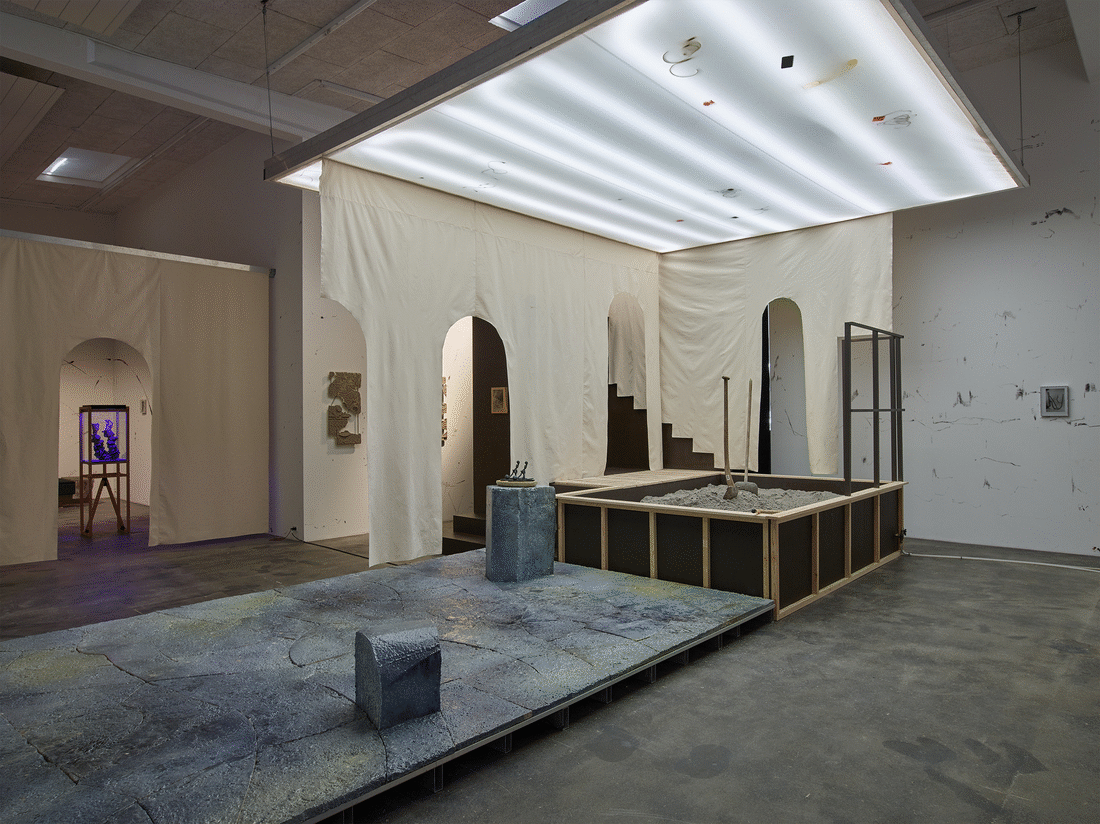FOS
/ˈpalɪm(p)sɛst/
02.06 - 27.07.2018
Upon entering /ˈpalɪm(p)sɛst/ members of the audience are handed a set of instructions inviting them to change into a custom-designed lightweight robe. Once in this new attire, the visitor is ready to be buried up to the neck in the bath of warm sand that, together with the clay floor and water fountain, composes the large sculptural work at the centre of the gallery. By asking the public to leave their own clothing behind, the artist symbolically marks the transition, as in a rite of passage, from the everyday world, to the ‘separate’ space of the exhibition. Throughout his artistic career, FOS has consistently worked on this idea of the exhibition space becoming ‘another’ space; pointing beyond its physical location and usual function. Similarly, he explores the relational aspect of that space, often creating works that require direct or symbolic engagement from the public.
When submerged in the sand, the heat and weight of the material distorts the perception of scale and the boundary of one’s own body - a sensation of melting into the sand as the shell of your skin seems to dissolve. Sand is largely composed of silica, the most common mineral found on Earth and the basic element in the fabrication of microchips, a tool that allows today’s accumulation and massive circulation of digital data. Whilst buried, the body is overcome by an enormous quantity of sensorial information; in this case not an intangible overload of data flow but a very physical one, experienced through a primordial material. Silica is also the main component of glass, clay, glaze and mirror, all used extensively in the exhibition. Through the experience of being buried in the sandpit, the artist seems to push members of the audience to lose themselves; to become his materials. To paraphrase a known line, what does it mean to take on the perspective of a grain of sand?
This question connects to the use of the SAMPA phonetic alphabet in the titling throughout the exhibition in the titling throughout the exhibition. To the untrained eye, phonetically written words can be read as images whose meanings are unveiled only at the moment of vocalisation; the position of the spectator is once again pulled into the physical grain of the object. From the act of reading, to the uttering of the word, our grasp on meaning is slightly deferred and suddenly relocated within the word’s sound. This subtle shaking of our faith in language’s power to denote opens up a small, vertiginous space where sense is momentarily lost and quickly rearranged.
In the bi-dimensional works of the exhibition, images seem to suffer from their own vertigo: two painted mirrors are presented as a sort of double, pictures of glass tubes couple with their shadows, the uncanny print of a bird has three rhythmically repeating outlines. These vibrations of form, resonating with the deep recurring ring of a glass bell, present the exhibition as a creased unity, where materials and meaning seem to constantly ‘peel off’ from one other, shedding a skin in favour of an ever new one. This layering of traces and possibilities of meaning is, ultimately, a /ˈpalɪm(p)sɛst/.




